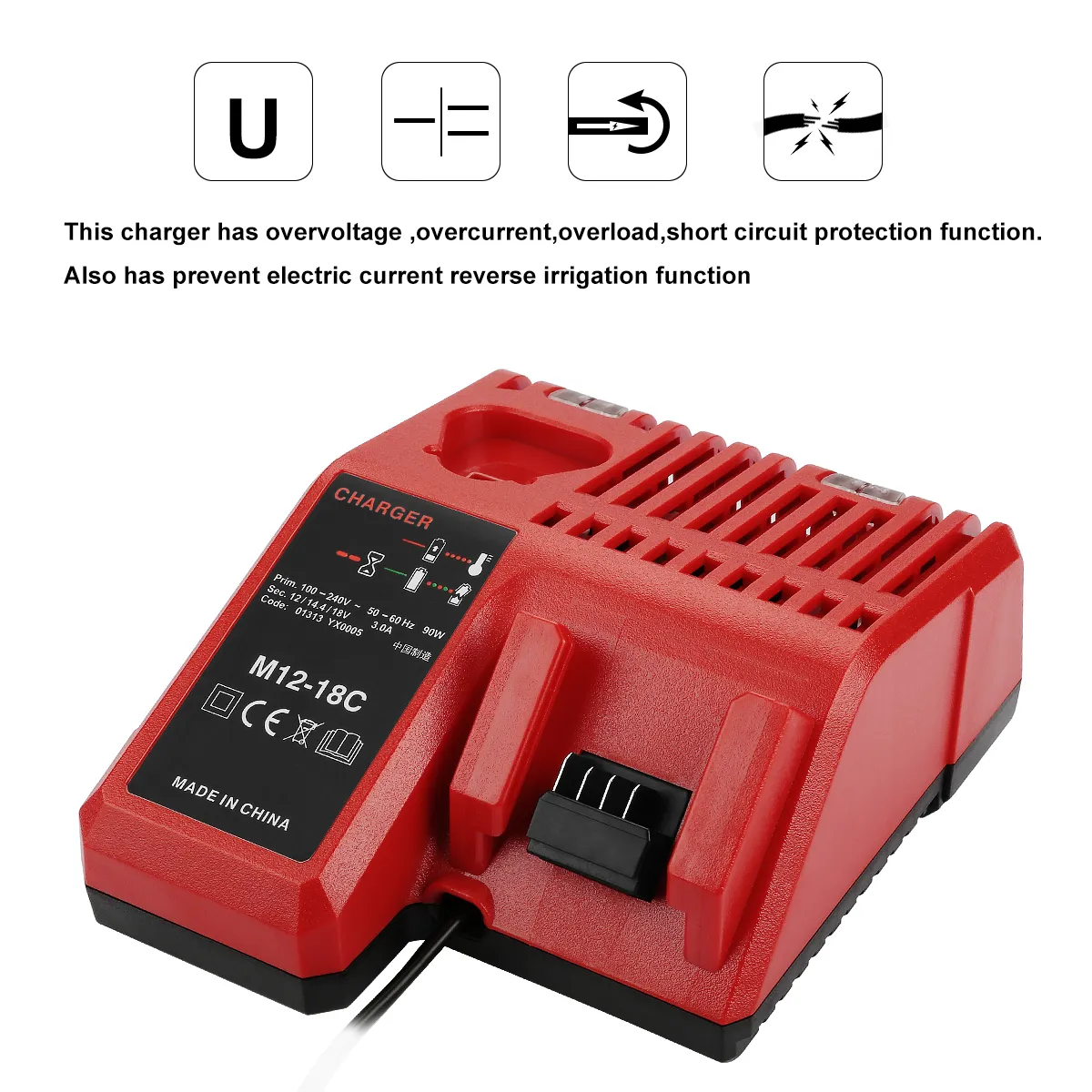Extend Charger Life: Maintenance & Cleaning Your Milwaukee M18 Charger
A well‑cared‑for charger not only keeps your batteries topped up but also prevents premature component failure, safety hazards, and costly downtime. Below is a step‑by‑step maintenance routine—backed by industry best practices—to help your Milwaukee M18 charger deliver reliable performance for years.

https://www.xnjtg.com/product/mil-m12_181. Safety First: Before You Begin
Always disconnect the charger from mains power and remove any battery packs before maintenance. Wear nitrile gloves and safety glasses, and work in a well‑ventilated area to avoid inhaling dust or solvent fumes.
2. Tools & Materials Checklist
| Item | Purpose |
| Compressed‑air can (0.3 MPa) | Clear dust from vents and crevices |
| ESD‑safe soft bristle brush | Dislodge embedded debris without scratching |
| Lint‑free cloths | Wipe housing and contacts |
| ≥ 70% isopropyl alcohol | Remove grease, oils, and light corrosion |
| Multimeter (0–30 V DC) | Verify output voltage after cleaning |
| Flashlight or magnifier | Inspect for cracks or component damage |
| OEM power cord & inline fuse | Replace worn or blown parts |
3. Exterior Cleaning & Cord Inspection
1. Blow Out Dust
Short bursts of compressed air through intake and exhaust vents—dust buildup raises internal temperatures by up to 15% (per UL 2595 thermal tests).
2. Wipe the Housing
Lightly dampen a lint‑free cloth with alcohol; clean all external surfaces, especially the LED lens.
3. Inspect & Clean Cord
Look for cuts, kinks, or exposed wires; wipe the plug ends with alcohol. Replace if continuity or insulation is compromised.

12V-18V M18 Lithium Ion Battery Charger for Milwaukee Power Tool Lithium Ion Battery
4. Vent & Contact Maintenance
1. Brush Intake Grills
Use an ESD‑safe brush to dislodge fine particles inside vents—this maintains optimal airflow.
2. Terminal Care
Lightly abrade charger and battery contacts with a clean pencil eraser or dedicated contact pad to remove oxidation.
3. Check Spring Tension
Depress each contact spring; it should snap back firmly. Weak springs increase resistance and heat generation.
5. Functional Verification
After cleaning, ensure your charger still meets performance specs:
- No‑Load Voltage Test
With no battery attached, measure output—should read 21.6 V ± 0.2 V.
- LED Sequence & Fan Check
Plug in without a battery: LED should follow red → flashing green (if applicable) → green, and the fan (on rapid models) should spin.
6. Maintenance Cadence
| Interval | Tasks |
| Weekly | Quick exterior wipe; check cord routing and strain relief |
| Monthly | Compressed‑air vent purge; brush grills; wipe contacts with alcohol |
| Quarterly | Inspect inline fuse and flex cord for internal breaks; perform voltage test |
| Annually | Professional service: replace electrolytic caps, recalibrate output, inspect PCB |
7. Environmental & Usage Best Practices
- Temperature Range: Operate and store between 5°C and 40°C to prevent thermal cycling stress.
- Mounting Location: Wall‑mount at eye level in a clean, dry workspace—floors collect dust and debris.
- Duty Cycles: After two consecutive charges, allow at least a 10 min cooldown to let internal components equalize.
8. Troubleshooting Post‑Maintenance
If issues persist:
- No Power / No LEDs: Re‑check fuse and cord continuity.
- Error Flashes: Re‑clean BMS handshake contacts and test with a verified good battery.
- Overheating: Confirm fan operation; inspect heatsink area for hidden blockages.
9. FAQ
1. How often should I deep‑clean my charger?
Every 6–12 months, or sooner in dusty environments.
2. Can I use water‑based cleaners?
No—always use isopropyl alcohol to avoid moisture damage.
3. When should I replace the inline fuse?
If continuity fails or LEDs remain dark despite a good power source, swap the fuse before replacing the entire unit.
By following this structured maintenance routine—safety checks, regular cleaning, performance verification, and environment control—you’ll extend your Milwaukee M18 charger’s lifespan, maintain fast, reliable charging, and safeguard both your batteries and your jobsite.